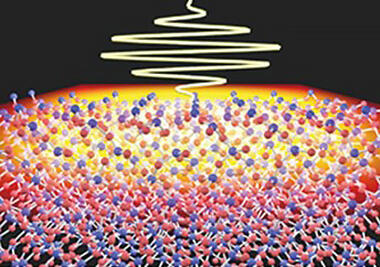Light shining on a material causes its electrons and ions to oscillate. This oscillation causes the light to refract and reflect. SALMON, an open-source software package, can be used to investigate the microscopic motions of electrons and ions in light-illuminated materials using first-principles calculations and helps clarify these phenomena. A joint research group led by Professor Kazuhiro Yabana from the Center for Computational Science at the University of Tsukuba developed this software, releasing the first version in 2017.
The group has now succeeded in first-principles calculations of the optical response of nanomaterials containing more than 10,000 atoms using the supercomputer Fugaku. The achievement was a world first. Specifically, the group highly optimized SALMON for the task. It used about one-sixth of Fugaku's CPUs to perform parallel calculations consisting of more than 100,000 processes. Running SALMON on Fugaku allowed the group to study the nonlinear optical response of a thin film (approximately six nanometers thick) of silicon dioxide glass (SiO2) to intense pulsed light. The group found that the glass became opaque, quickly absorbing light. In addition, high harmonics with frequencies several to several dozen times higher than the frequency of the incident light were observed in the reflected and transmitted waves.
SALMON can freely simulate the pulse waveforms of light and the material structures, helping clarify phenomena caused by the motion of electrons and ions in microscopic space, which is difficult to measure experimentally. Going forward, the group aims to demonstrate the effectiveness of using supercomputers such as Fugaku to perform calculations on a wide variety of optical science phenomena to clarify phenomena from the atomic level. They also hope to have SALMON become widely used worldwide as a standard software tool.

It shows how pulsed light is incident on the surface of silicon dioxide, which is composed of many atoms, and how the energy of the light is transferred to electrons and ions on the surface.




